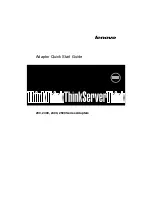
Mini Keying Adapter
01/07/2016
Page 2 of 6
Parts List
Part
Value
PCB
Mini Keying Adapter printed circuit board
D1
1N4148 diode
Q1
2N7000 MOSFET
Q2
AOI516 or IRFU220 MOSFET
R1, R2
100 K Ω 1/4W resistor (Brown-Black-Yellow)
TB1
6-position terminal block
Assembling the Kit
Always use good static prevention practices when working with static sensitive parts. This means
you should wear a grounding strap when possible, or work on a static-dissipative work surface.
Use a grounded tip soldering iron if possible. When soldering small parts it is a good idea to use
a fine-tipped, small pencil-type soldering iron of no more than 25W or so. If you are not fairly
experienced with soldering small parts, you may want to practice on some scrap parts first or get
some help from a more experienced builder. Do not try to use a large soldering gun – get the
right tool for the job.
All parts should be installed from the top (white printed) side of the printed circuit board. As you
install each component, bend the leads slightly if needed to help hold the part in place. It’s a
good idea to use pliers, clamps or alligator clips as heat sinks whenever possible to prevent heat
damage to parts while soldering. Solder the leads in place, being careful not to use too much
solder. Using a pair of fine-tipped flush or diagonal cutters, neatly clip the component leads close
to the solder joint.
□
Install resistors R1 and R2 into the marked
locations on the PCB. They are not polarity
sensitive, meaning they can be installed with
the color bands going either way.
Bend the resistor leads at right angles to the
resistor body as shown so they match up with
the holes in the PCB.
□
Install diode D1 into the marked location. This
part is polarity sensitive, and must be installed
with the black band on the diode oriented as
shown by the silkscreened markings.
























